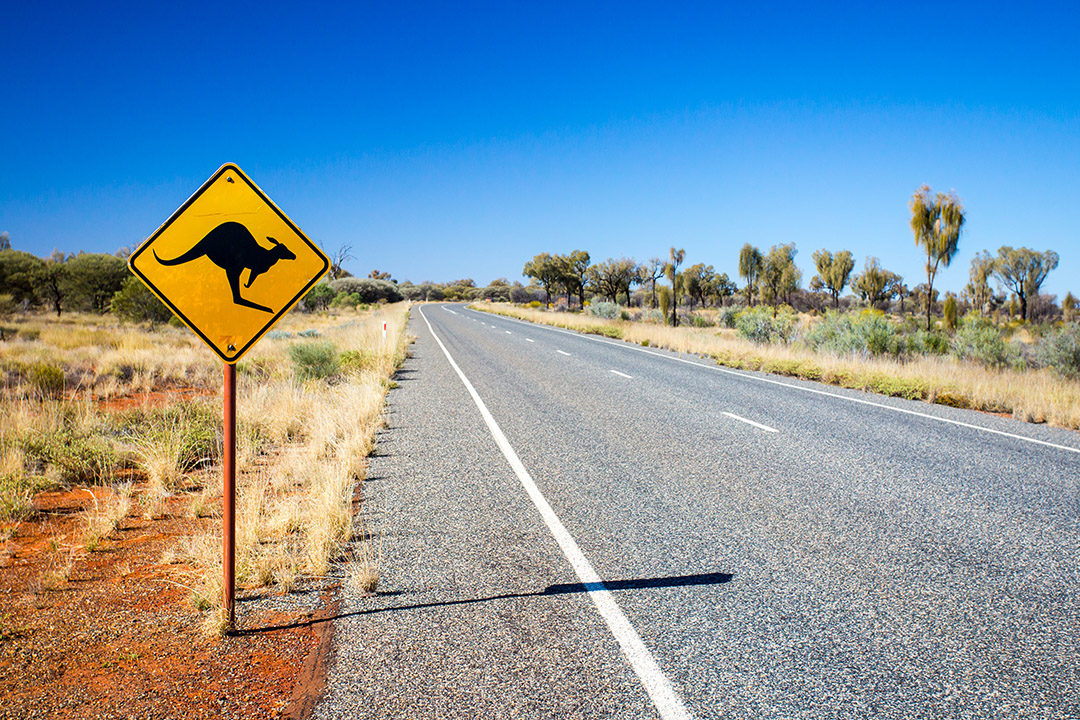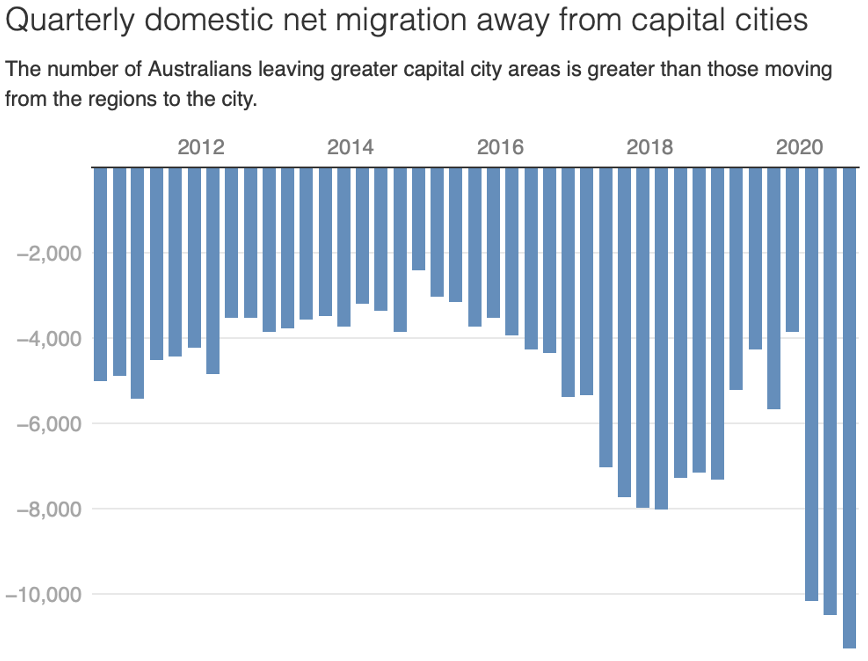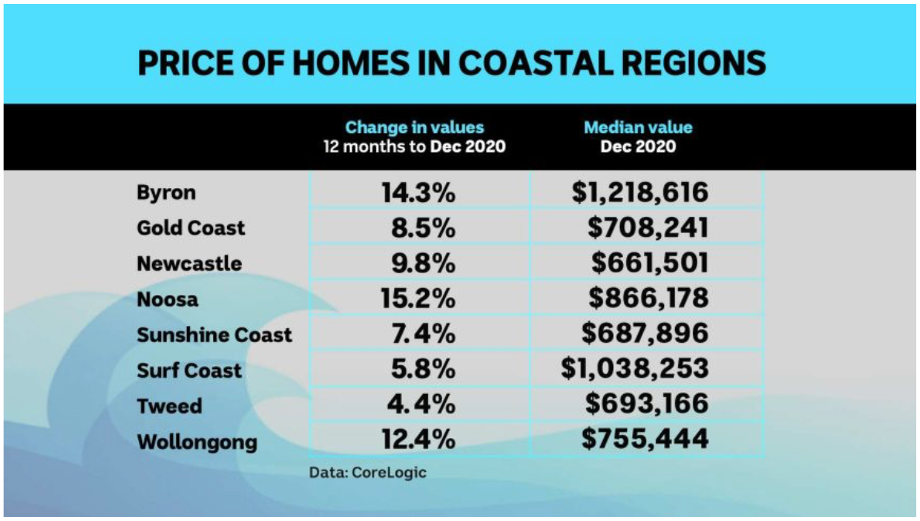

It’s been an historical question that has been asked by many generations of Australians and it goes simply as: “City or the bush?” For centuries, the cities have had the upper hand but the Coronavirus changed all that with the net loss of citizens from our capital cities hitting record highs. But will it last?
An expert on “us” and where we want to live says no, and that it’s simply a “sugar hit”! But could it become something more than a temporary high? The same expert says yes!
In the September quarter last year, capital cities had a net loss of people numbering 11,200. That’s the biggest on record but respected UNSW urban planner, Shane Geha, says this stay at home and shift-to-the-regions trend is a “sugar hit” caused by the Coronavirus, but it won’t last.
Anyone hoping that the price of their city home rises and not falls better hope they’re right.
The expert on cities and what we want says the jobs are in the cities so we’ll want to be as close to our work as possible.
His argument is that cities such as Wollongong and Ballarat need to have populations of 1 million before they have the economies or ecosystems that can draw in people and keep them.
Wollongong’s population is 305,000 and Ballarat has 117,000 residents, so there’s a long way to go for both of those cities.
“The fundamental reason why 70 per cent of Australians live in the big six cities hasn’t been changed by COVID,” Dr Geha told The Australian’s Stephen Lunn. “They have the jobs and they have the services people want.”

He says governments shouldn’t get too carried away making the regions more attractive and ignore the needs of the cities because it’s thought that this Coronavirus migration out of the cities is a permanent thing. “We can’t be lulled into creating incentives for growing the regions when it is more important to get the infrastructure settings right for our cities,” Dr Geha insisted. “This is where most people want to be and there’s a reason for that — it is where the work is.”
He concedes that a small percentage of people will make the shift to the bush permanently but not a majority. “If you take a five-year view of this, most people will find themselves back working in a collaborative environment such as an office,” he told The Australian. “I think it’s what employers want.”
There could be a real game changer over time and that’s a fast train between Sydney and Melbourne! But how realistic is that? Last year the Federal Opposition leader Anthony Albanese renewed calls for a bullet train connecting Melbourne, Sydney and Brisbane but report from the Grattan Institute pointed out that only two countries have ever recouped the costs of building such a train.
There have been hopes for a very fast train here in Australia for over four decades. The first proposal came from the CSIRO’s Dr Paul Wild and big companies such as BHP, Elders IXL and TNT formed a joint venture to see if it was viable.
More studies and ideas came in the 1990s but the joint venture folded in 1991 after the Federal Government said no to a favourable tax deal for the project.
Wikipedia tells us that “In December 2008, the Rudd government announced that an east-coast very high speed railway was its highest infrastructure priority. A $20 million study was undertaken in two phases, with Phase 1 released in August 2011 and identifying a preferred route, and Phase 2 finalising a detailed corridor selection as well as costings and demand forecasts. It estimated the 1748 km railway between Melbourne, Sydney and Brisbane with a spur line to Canberra would cost $114 billion (100% publicly funded) and not be fully operational until 2065. It was heavily criticised for its extremely high cost estimates and absurdly long construction timeframe, with the suggestion that this meant the government had never intended the project to go ahead. (James Whitmore, The Conversation 31 August 2015)
In February 2020, Infrastructure Australia (IA) recommended the prioritisation of works to enable faster train travel between Canberra and Sydney. “Currently, it takes more than four hours to travel between Sydney and Canberra by rail, compared to 3 hours by car and one hour by plane, “ an act.gov.au report explained. “Only around 1 per cent of people travelling between Sydney and Canberra choose the train at this time.”
Given this much easier project has not be started and given the Federal Government budgeted to spend so much that its projected deficit for 2020-21 would be $213.7 billion, which was a 11% of GDP, the likelihood of money going into a very fast train is close to zero.
And another development that might stop the drift to the bush is the big price rises for homes, as the chart below shows.

Over the same period of time (as the chart above shows), capital city prices rose by 1.7%. Once we get over the fear that the pandemic has brought to us (the threat of living too close to others) working in the CBD will gain favour again. We can be spooked into temporary change but we are creatures of habit, and one of our habits is to love what city life brings — cafes, entertainment, education, etc. — and all the things that have made young country people head for the big smoke!